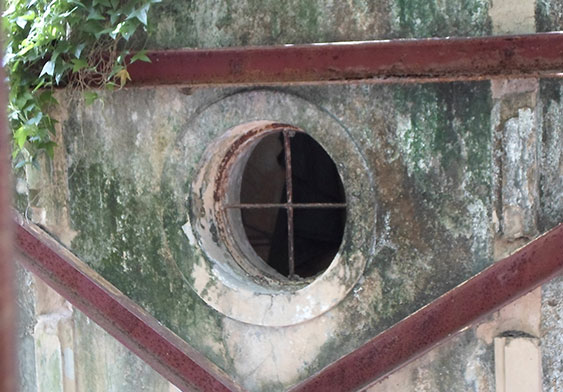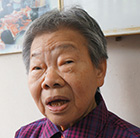
Traces of blockhouses still remain to this day
A photograph of the corner opposite Nga Tsin Wai’s public toilet-Photo taken by HKMP Team (2012)
Traces of blockhouses still remain to this day
A photograph of the corner opposite Nga Tsin Wai’s public toilet-Photo taken by HKMP Team (2012)
Nga Tsin Wai’s blockhouses and great wall
In the past, protection houses were built along the moat of Nga Tsin Wai. The house walls facing the moat formed into the village wall, resembling the ‘great wall’ of the village. A protection house had the same height and width as other houses in Nga Tsin Wai, but it had only one door, which opened to the alley inside the village. Hung Gu’s elder brother had lived in a protection house built at a corner of the village. Hung Gu emphasized that the enclosing walls were thick enough for a person to lie on it with stretch-out limbs, so she used to lie on it for a nap after work. Later on, many protection houses were demolished and their traces could hardly be found when unauthorized buildings appeared in Nga Tsin Wai. Before the Second World War, Hung Gu lived in Sha Po Village, but sometimes would go to Nga Tsin Wai for fun. She had heard that there were cannons in the village, and had seen one after the War. In those days, the turrets still existed in Nga Tsin Wai. When she went to Nga Tsin Wai with a group of playmates, she had found a turret on the 6th Lane. The house with the turret was also a dwelling unit and there was a stairway in the house leading to the outlook and embrasure of the turret.


 BACK
BACK  CLOSE
CLOSE 